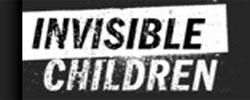



FOR IMMEDIATE RELEASE
Contact:
Amber Palmer, Resolve Director of Communications, 202-213-3388, [email protected]
Paul Ronan, Resolve Director of Advocacy, 202-596-2517, [email protected]
Jonathan Hutson, Enough Project Director of Communications, 202-386-1618, [email protected]
Ben Keesey, Invisible Children CEO, 310-210-7344 [email protected]
Meg McDermott, Citizens for Global Solutions Policy Associate, 281-793-4891
WASHINGTON – President Obama must move to implement his recently-released strategy committing the U.S. to help civilians in central Africa threatened by the Lord’s Resistance Army (LRA), say a coalition of prominent civil society organizations. To that end, these groups have created a report card to grade the President’s strategy and its initial rollout.
President Obama released a strategy in November for the U.S. to engage with regional partners and assist in stopping violence perpetrated by the LRA, a rebel group that terrorizes remote communities in central Africa, and help communities affected by the conflict rebuild. This strategy was mandated by the bipartisan LRA Disarmament and Northern Uganda Recovery Act, the most widely-supported piece of Africa-specific legislation in recent U.S. history.
“This strategy came straight from President Obama’s desk and is a huge step forward for U.S. policy towards the crisis. If this blueprint is put into action, it will have a tremendous influence in improving safety for those living in the midst of LRA violence,” said Michael Poffenberger, executive director of Resolve, a nonprofit organization that supports ending LRA violence. “But President Obama will need assistance from Congress – in the form of continued political support and increased funding – for this strategy to succeed.”
The LRA, led by senior commanders indicted by the International Criminal Court, has plagued central Africa for more than two decades. Since September 2008 attacks orchestrated by LRA commanders have killed at least 2,300 people and abducted more than 3,000, including many children who were forced into being soldiers or sexual slaves. Another 400,000 civilians fled the violence in the Democratic Republic of Congo (DRC), southern Sudan, and Central African Republic. In 2010 alone, LRA rebels committed more than 240 deadly attacks.
“It’s time for the Obama administration to show it is serious about ending LRA violence against civilians,” said David Sullivan, Research Director for the Enough Project. “By committing senior staff and resources commensurate to the urgency of the crisis, the United States can help galvanize wider international action that has been absent for too long.”
The report card assesses President Obama’s LRA strategy. In a letter to President Obama, the groups also lay out four priorities for implementation of the strategy in the coming months: taking immediate steps to improve regional efforts to protect civilians, finding viable alternatives to the Ugandan military in apprehending or removing from the battlefield senior LRA commanders, expanding efforts to demobilize LRA commanders, and dedicating significant new staff and financial resources to implementing the strategy.
“We don’t want the President to lose sight of the promises he made in his LRA strategy,” said Don Kraus, CEO of Citizens for Global Solutions. “The U.S. must do everything in its capacity to help apprehend senior LRA commanders. I look forward to an ‘A’ grade on the next report card when these heinous criminals are standing trial in front of the International Criminal Court.”
The initial grades for the report card highlight the strategy’s content and initial rollout and are as follows:
- Expanded US involvement to end the crisis: Grade D
- Protection of Civilians: Grade C
- Stop senior LRA commanders: Grade C
- Facilitate escape from the LRA: Grade B
- Help affected communities survive and rebuild: Grade B
“We want President Obama to remember the promises he made to the victims of the LRA and the hundreds of thousands of young activists who have rallied for this cause,” said Ben Keesey from Invisible Children. “We hope this report card will keep him on track.”
###
Background on the LRA and U.S. engagement on the crisis
The Lord’s Resistance Army was founded more than two decades ago by Joseph Kony. The LRA was originally based in northern Uganda, where thousands of civilians were killed and nearly two million displaced by the conflict between the rebels and the Ugandan government. The rebel group expanded its operations into Sudan in the 1990s, where it received support from the Sudanese government. In 2005 five senior LRA commanders, including Kony, were indicted by International Criminal Court on charges of war crimes and crimes against humanity. Though the rebel group ended attacks in northern Uganda in 2006, it moved its bases to the northern DRC and has since committed acts of violence against civilians in remote regions of DRC, Sudan, and the Central African Republic. Kony and his top commanders sustain their ranks by abducting civilians, including children, to use as soldiers and sexual slaves.
In December 2008, following the collapse of a peace negotiations process, Sudan, Uganda and DRC began a joint military offensive against the rebel group. “Operation Lightning Thunder” received support from the U.S. In the subsequent two years the LRA dispersed into multiple smaller groups and brutally murdered at least 2,000 civilians and abducted at least 2,500 people, many of them children. LRA violence has often targeted churches, schools and markets, and includes the massacre of more than 850 Congolese civilians in December 2008 and the massacre of more than 300 Congolese civilians in December 2009.
The LRA Disarmament and Northern Uganda Recovery Act was introduced into U.S. Congress by a bipartisan coalition of Senators and Representatives on May 19, 2009. It passed the Senate on March 10, 2010, and the House of Representatives on May 12, 2010. President Obama signed the legislation into law on May 24, 2010 and released a statement saying, “I signed this bill today recognizing that we must all renew our commitments and strengthen our capabilities to protect and assist civilians caught in the LRA’s wake, to receive those that surrender, and to support efforts to bring the LRA leadership to justice.”
Section 4 of the law required President Obama to develop “a strategy to guide future United States support across the region for viable multilateral efforts to mitigate and eliminate the threat to civilians and regional stability posed by the Lord’s Resistance Army” and report that strategy to Congress within 180 days of the legislation being enacted. President Obama released his strategy on November 24, 2010.

